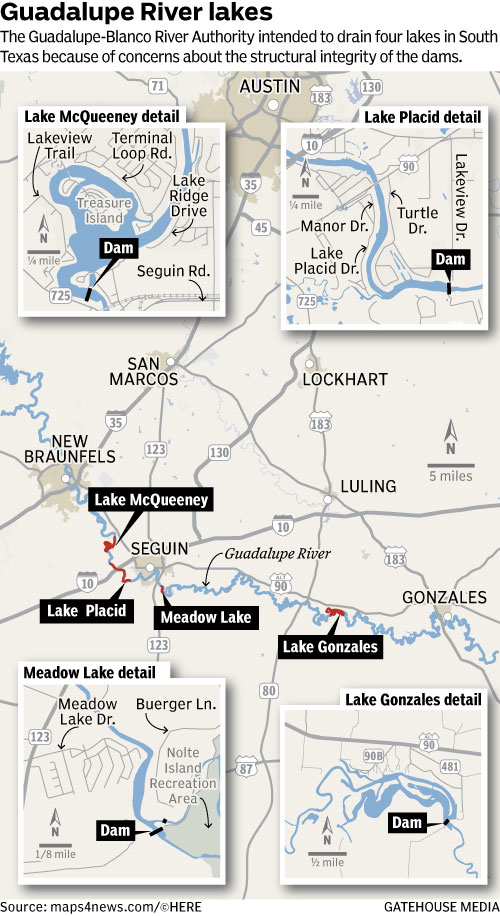SEGUIN — In the lock screen photo on Riley McDavitt’s phone, his daughter Felicia sits perched on his lap, her legs dangling over the edge of a wet wooden dock on Lake McQueeny. The blue life vest that hugs her body is a little too big on her shoulders and the giant water skis attached to her feet are partially submerged in the water below.
“This is my daughter at 2,” McDavitt said proudly, pointing to the photo taken in 1993. “The day she started skiing.”
The 400-acre lake five miles west of Seguin is where the San Antonio native first learned to water ski in 1956. For six decades, he's barefooted and skimmed across the surface of its waters, first as a boy and later as a parent and grandparent. Today he owns Riley’s H20 Ski School, where he gives water skiing lessons and runs a day camp out of his home.
But because of a legal battle between lakefront property owners and the Guadalupe-Blanco River Authority, McDavitt’s business — and the future of the lake it depends on to survive — is on hold.
In mid-August, the river authority announced with no advance warning that it would drain Lake McQueeny and three other lakes on the Guadalupe River because the safety of the dams was in doubt. Citing engineering reports, two previous dam failures, and difficulties securing funding for repairs, the GBRA said draining the lakes was the "only available option."
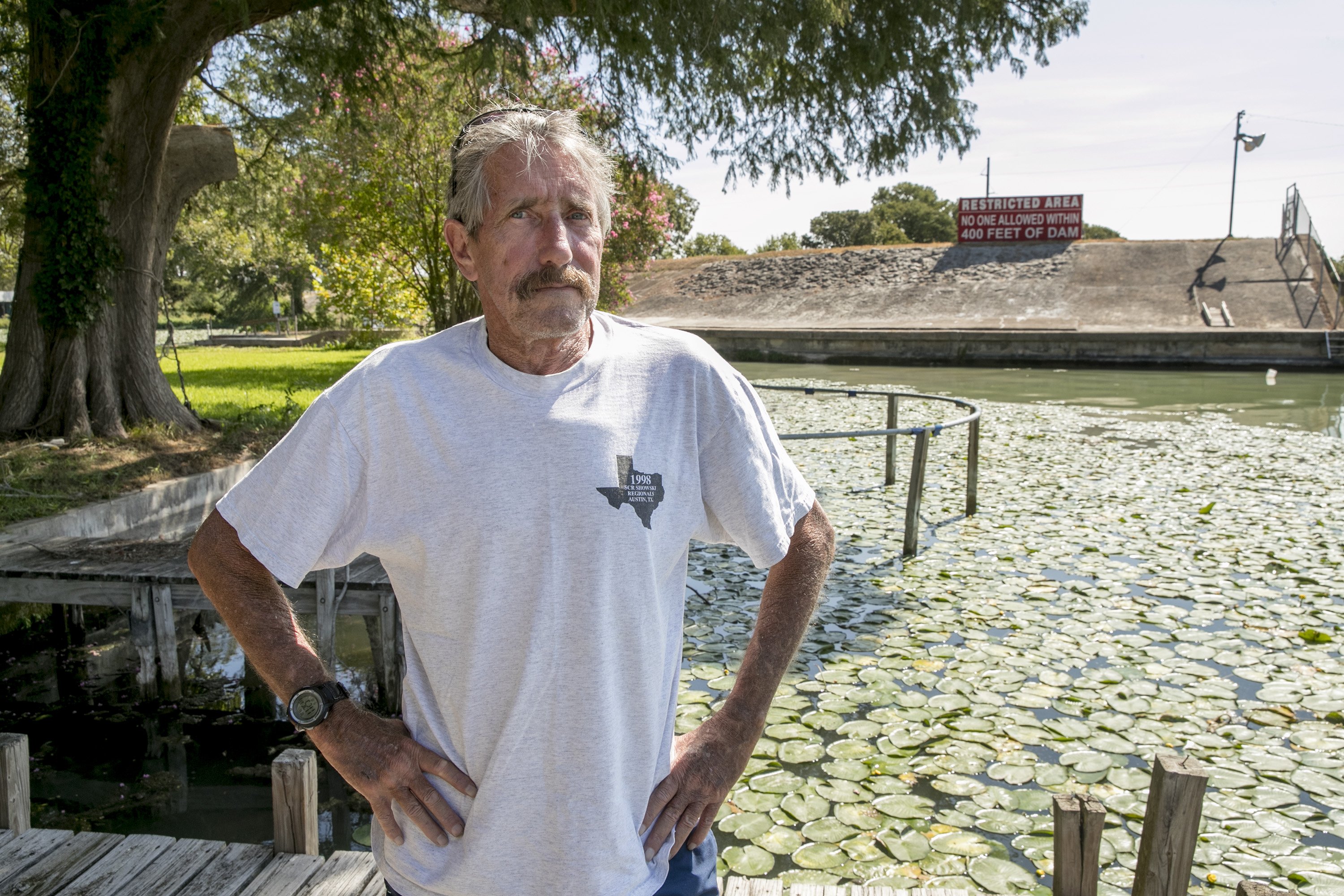

“Safety is our top priority. We understand this is an unpopular decision, but one that we feel is unavoidable given the dangers associated with these dams,” said GBRA General Manager and CEO Kevin Patteson in a news release announcing the decision.
Residents on the lakes were quick to file suit to stop the action, and, on Sept. 16, a week before the scheduled drawn down, the judge handling the case ordered the river authority to postpone draining the water for a year while a panel of experts assess the 90-year-old dams the GBRA said have "surpassed the end" of their lifespans.
The experts are expected to have a recommendation by mid-October to mid-November on which parts of the lakes — if any — are safe for use.
In the meantime, all recreational activity on Lakes McQueeny, Placid, Meadows and Gonzales is banned.
“We’re going through withdrawal,” McDavitt said.
Property owners, while relieved the settlement gives them time to come up with solutions that could keep the dams in operation, still worry the GBRA could decide to drain the lakes anyway. One business owner called it a potential "economic and environmental disaster."
“I’m cautiously optimistic,” said Tess Coody-Anders, a leader of a coalition of property owners. “[The settlement] demonstrates the GBRA has confidence in the local community and local residents to be a real partner in mitigating safety concerns. It’s also a recognition that GBRA understands that draining the lakes without a plan is not an alternative for these little towns.”
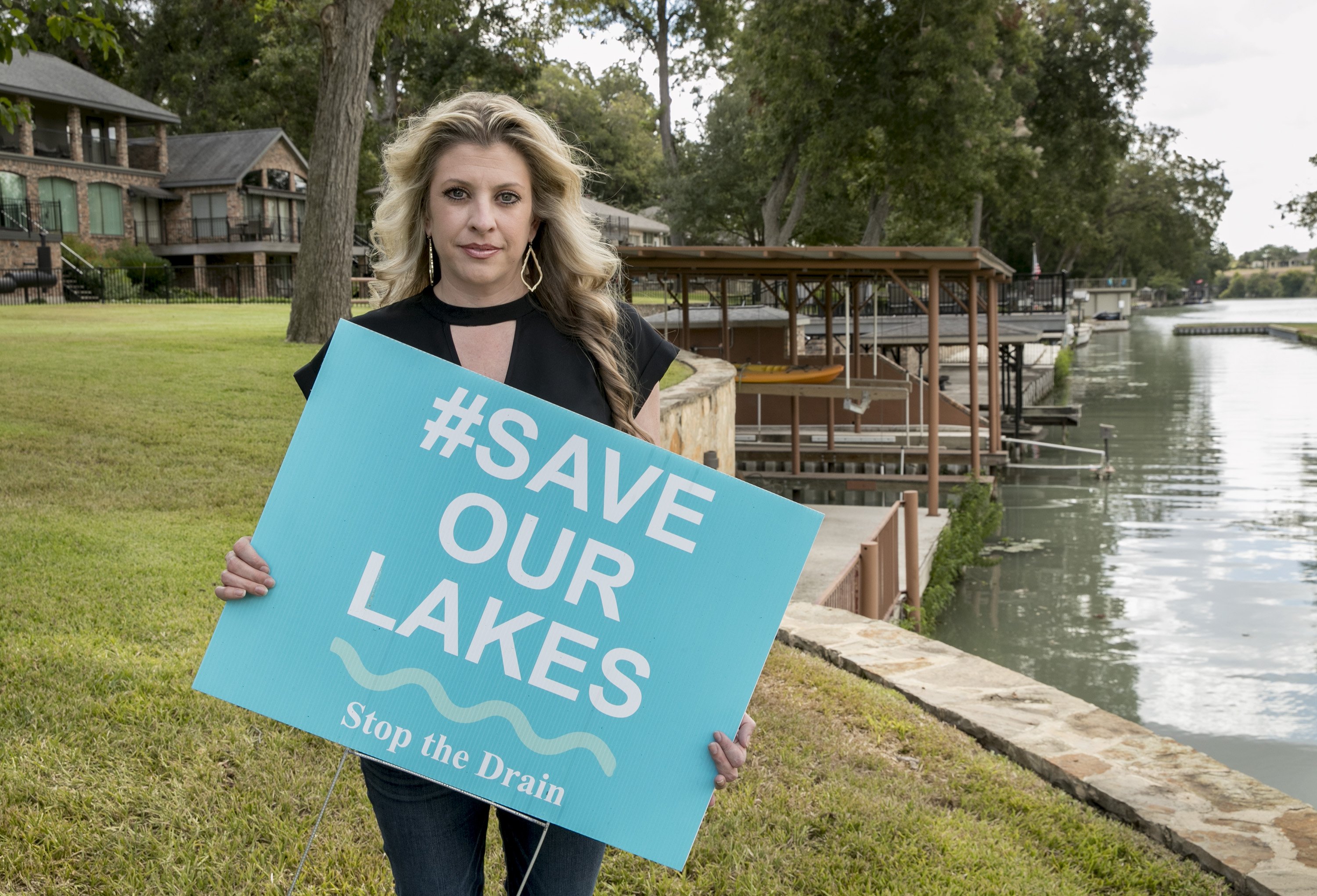
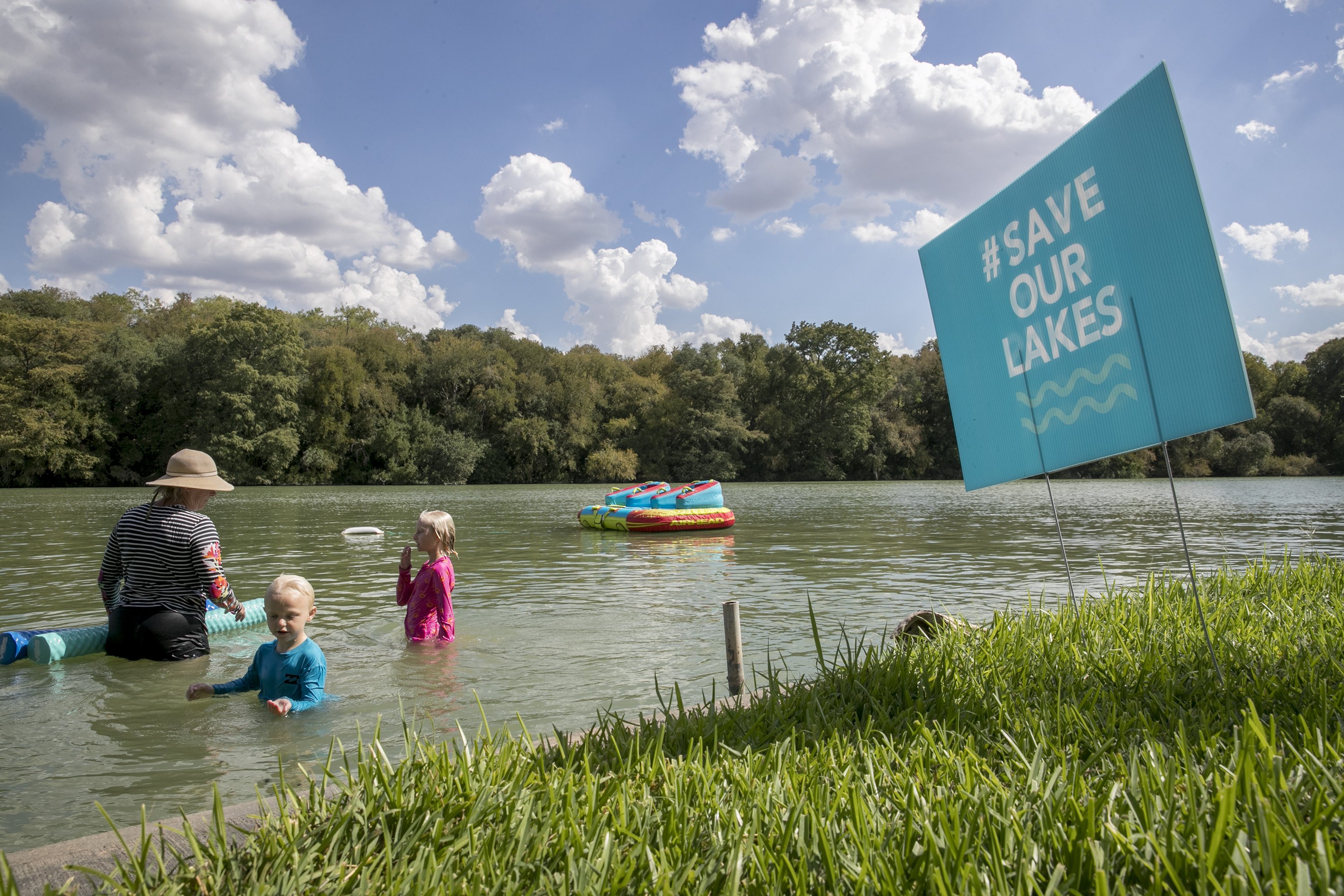
The episode casts light on the state's aging dams and the shifting importance of Texas lakes as recreational and economic hubs. A 2017 American-Statesman investigation found several hundred substandard dams upstream of populated areas in Texas that violate state law intended to guard against dam breaching, or failure, in catastrophic floods.
Draining the lakes would end a way of life for lakefront homeowners, but it would also remove a major economic engine in Guadalupe and Gonzales counties. The businesses on the lakes not only provide jobs, but the taxes from those businesses and lakefront homes help fund local school districts.
In letters to Gov. Greg Abbott and resolutions passed by the Seguin City Council and Guadalupe County Commissioners Court, community leaders detailed the potential financial hit of draining the lakes: Lakefront property taxes provide a combined $785 million in annual revenue for the Seguin and Navarro school districts and tourists drawn to the lakes spend more than $60 million every year at Seguin-area businesses.
“This isn't just about people wanting to ski,” Coody said. “This is about people wanting to thrive in Seguin.”
Like many others across the Guadalupe County, Seguin Superintendent Matthew Gutierrez expressed mixed feelings of gratitude and apprehension.
“A pause has certainly brought a level of calm, but I don't think it has eased a lot of anxiety,” Gutierrez said.
Without knowing whether the lakes will endure and what will become of the lakefront properties, some of which are valued at more than $1 million, Gutierrez said budgeting and planning for future projects will be difficult.
“At the end of the day … there’s still so many unknowns,” Gutierrez said.
Residents from the lake associations at Lake McQueeny and Lake Placid have proposed creating special taxing districts to generate revenue to back bonds to pay for dam repairs. The districts would need to be approved by voters in May 2020. Residents haven't decided yet how much to levy.
"It was our way of trying to help be part of the solution, by taxing ourselves," said Lindsey Gillum, a member of the Lake McQueeny Preservation Committee. "There's a much more realistic safety mitigation plan that can be put in place that achieves safety and doesn't devastate the economy."
"Our hope and ... our belief is that the GBRA will come to the table with some participation. And we still hold out hope that there will be some level of participation from the county or the state."
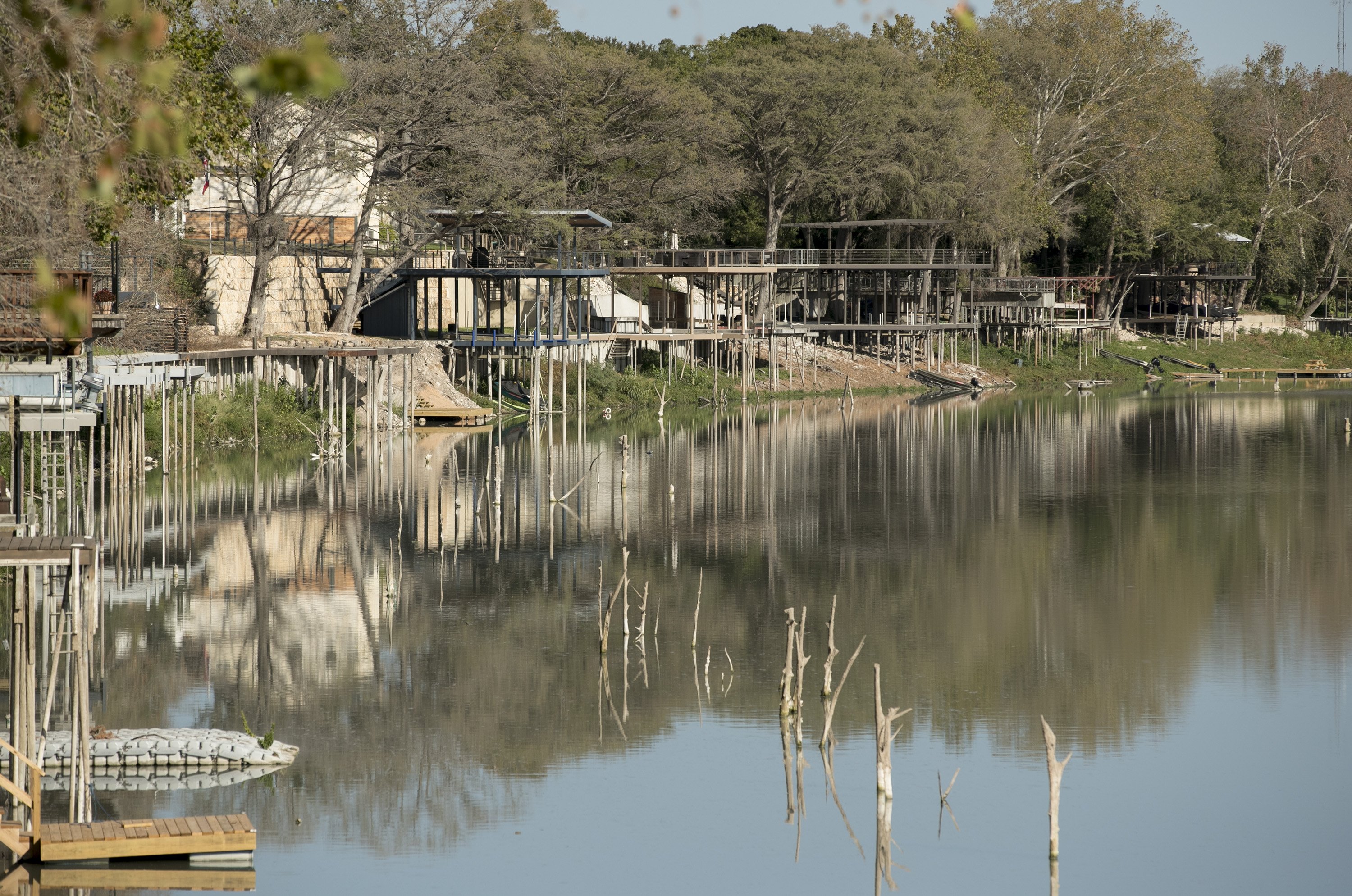
Hydroelectricity
The Texas Power Corporation, which constructed six hydroelectric plants and dams along the Guadalupe River in the 1920s and 1930s, was the first private power company in the state.
“It was quite a feat,” said Bill West, former General Manager of the GBRA who retired in 2016 after 23 years at the helm of the agency.
Because electricity was generated by water running through the spill gates, the lakes were never designed to store much water or control flooding. The properties that surrounded the basins weren’t million dollar homes, but fishing camps that could withstand the flood-prone waters of the Guadalupe River, West said.
Waiting game
A week after the court settlement, the GBRA board Wednesday formally approved the ban on boating, fishing and other water activities on Lakes McQueeny, Placid, Meadows and Gonzales. Anyone who violates the ban could face a $500 fine.
A GBRA spokeswoman said Friday the agency would have no further comment about the matter.
"All of us are really serious about making sure we help enforce this settlement agreement," said Gillum, the member of the Lake McQueeny Preservation Committee. "We don't want to see anyone violating the lake closure."
Dana Hall, the Director of Communications at the Seguin Chamber of Commerce and owner of an arts and crafts shop in downtown Seguin, urged other parts of the state to take heed of the outcome.
“I think that other communities that are built around lakes need to pay attention,” Hall said. “We were caught off guard, because we just trusted that [the lakes have] always been here and they always would be here — and we weren't paying attention.
